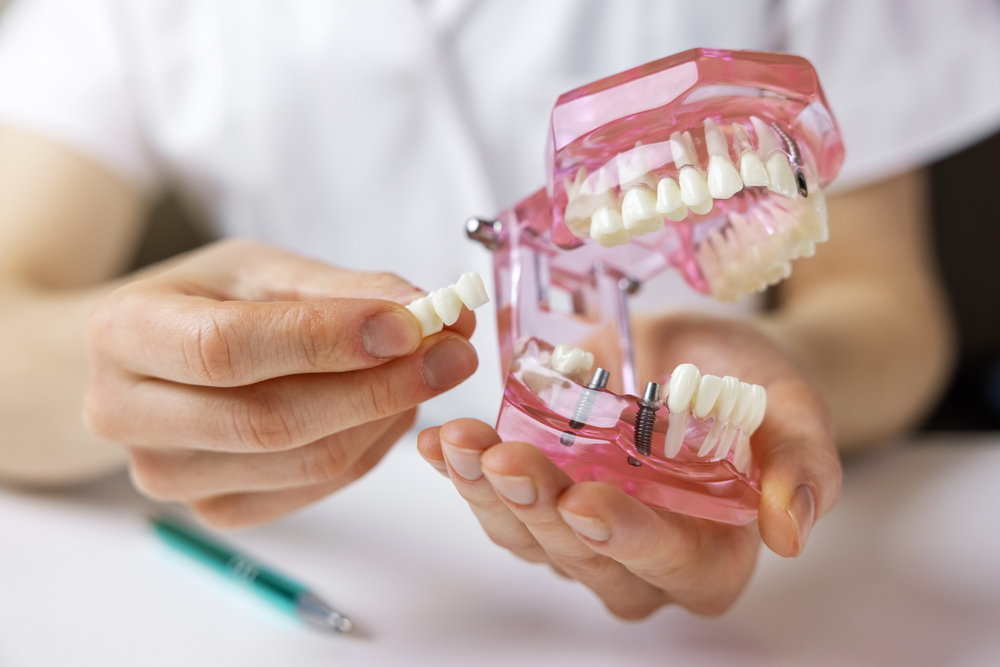How Do Dental Bridges Work to Replace Missing Teeth?

If you’re missing one or more teeth, you’re not alone - and you don’t have to live with the discomfort or insecurity that often comes with it. Dental bridges offer a practical and long-lasting solution for restoring your smile and oral function. These custom restorations are designed to fill the gap left by missing teeth, helping to preserve your bite, improve your appearance, and support long-term dental health.
Why Replace Missing Teeth?
Missing teeth can significantly impact both your appearance and your oral health. Aesthetically, even a single missing tooth can alter the balance of your smile, leading to visible gaps that may make you feel self-conscious or hesitant to smile. Over time, the absence of teeth can also affect the shape of your face. Without the support that teeth provide, your cheeks and lips may begin to sag, leading to a prematurely aged appearance.
Functionally, missing teeth can interfere with your ability to chew and speak properly. When gaps are present, neighboring teeth may begin to shift out of alignment, disrupting your bite and leading to further dental issues such as jaw pain, and uneven wear on remaining teeth. Additionally, missing teeth can contribute to bone loss in the jaw, as the bone in that area is no longer stimulated through regular chewing. This can compromise the stability of surrounding teeth and make future tooth replacement more complex.
What Is a Dental Bridge?
A dental bridge is a fixed prosthetic device designed to replace one or more missing teeth. As the name suggests, it “bridges” the gap created by the missing tooth using artificial teeth (called pontics) anchored in place by the surrounding natural teeth or dental implants.
The Process of Getting a Dental Bridge
Getting a dental bridge typically involves two or more visits to the dentist and follows a step-by-step process to ensure a comfortable, precise fit. It begins with an initial examination, during which Dr. Jane Arena or Dr. Desiree Milana will evaluate your oral health, take X-rays, and determine the most appropriate type of bridge based on your specific needs.
Once a treatment plan is established, the next step is preparing the abutment teeth—the natural teeth on either side of the gap. A portion of enamel is carefully removed from these teeth to make room for the dental crowns that will support the bridge. After the teeth are prepared, detailed impressions of your mouth are taken. These molds are sent to a dental laboratory, where your custom bridge is fabricated to match the shape and color of your natural teeth.
In the meantime, a temporary bridge may be placed to protect the exposed teeth and maintain your smile. At your next appointment, the permanent bridge is fitted, adjusted for comfort and bite alignment, and then securely cemented into place. The result is a seamless, functional restoration that restores your ability to chew, speak, and smile with confidence.
The Benefits of Dental Bridges
Dental bridges offer several advantages, including:
Restored Function: Improve your ability to chew and speak clearly.
Aesthetic Improvement: Replaces missing teeth with a natural-looking solution.
Maintained Facial Structure: Prevents the sunken appearance that can follow tooth loss.
Tooth Alignment: Prevents neighboring teeth from shifting out of place.
Schedule a Consultation with Dr. Jane Arena or Dr. Desiree Milana Today
Dental bridges are a tried-and-true solution for replacing missing teeth, offering both functional and cosmetic benefits. If you’ve experienced tooth loss, don’t wait to explore your options.
Schedule a consultation with Dr. Jane Arena or Dr. Desiree Milana today to find out if a dental bridge is right for you and take the first step toward a healthier, more confident smile. Contact our office in Wantagh, New York, by calling (516) 785-9065 to book an appointment today.



